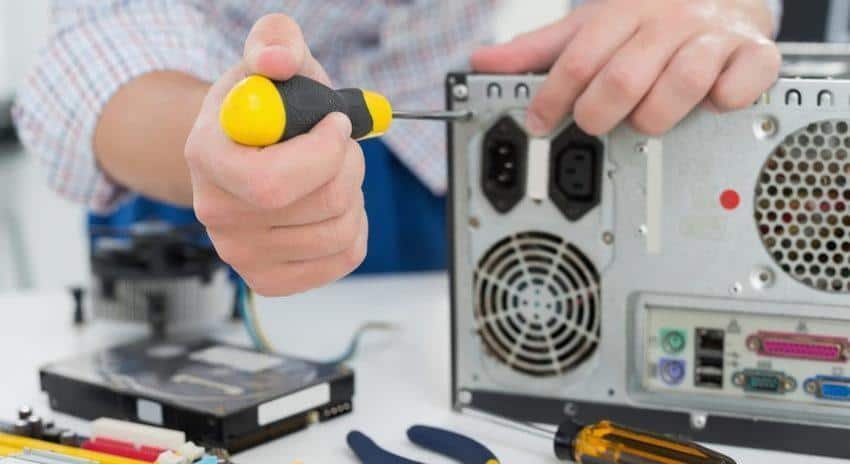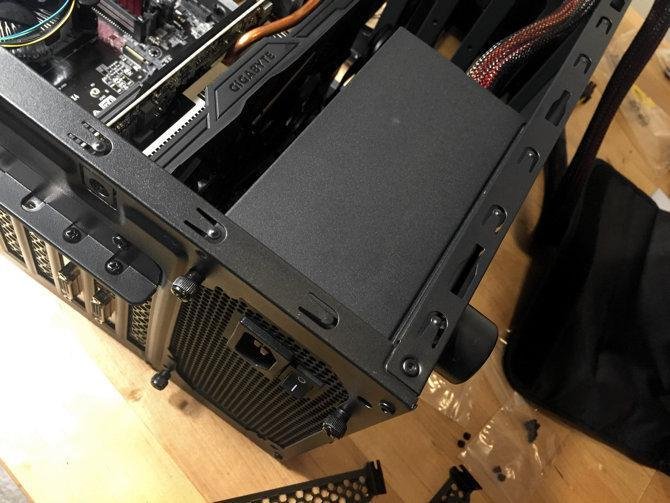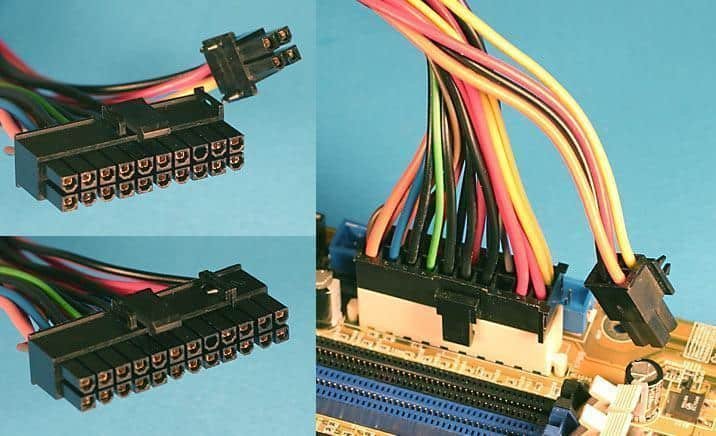If it's time to dispose of your old computer, consider retaining its power supply and perhaps some other components. They can probably be used.

One of the best ways to reduce the cost of upgrading or purchasing a new computer is to reuse some old components. You can keep some accessories, such as the sound card, the unit DVD, its box and most likely its power supply (PSU).
In the case of the PSU, this could save you up to 150 euros. While the graphics card, CPU, motherboard, and RAM may need upgrades, the PSU usually has no need.
But is your old PSU really reusable? Can you use an old power supply for a new computer? Let's find out if your power supply is reliable and if it has the required power.
Find and remove your computer power supply
Desktops, whether tower (vertical) or horizontal, have a power supply on the back. To find it, look at the cables on the back of your computer. Along with all the other cables for audio devices, screen, keyboard, etc., you will also find the cable power supply which is connected on one side to your home socket and on the other to your PC. The box that plugs into your pc is your power supply and of course comes with a standard on-off switch and an outlet fan for cooling.
Okay, now you know where the PSU is on the back of your computer. But what happens inside?

Before proceeding, make sure that the computer is turned off and that you unplug the power cord from the power supply (if it is not disconnected, simply unplug it). Press the button that opens the computer even though it is not on and you may think we are drunk. It is the easiest way to empty the internal components of your computer from capacitor currents etc.
You should also take antistatic precautions, wearing plastic gloves, to maintain the integrity of your hardware. In the psu you will not have problem but since there is a possibility of accidentally touching other components, it is a good idea to do so.
Remove the left side cover, and you should see the power supply inside (or at least edit its position). There is a case where you can not see it well but you can not reach it easily. A cable harness may be blocking you, but it may also be jammed with the DVD drive or even the CPU fan.
To remove the PSU, securely disconnect the power cords from the motherboard, CPU, drives, and other components. Generally unplug any cable that starts at the power supply and is plugged into a socket. Grasp all disconnected cables with a rubber band for easy handling.
Then remove the PSU locking screws on the back of the case, and then pull the power supply out of the computer case. When disassembling a computer for safety reasons, you must always remove the PSU from the case first.
Understand your power supply
While the specifications of each system, your computer, can be analyzed by benchmarking, the power supply is different. To learn more about this, you need to look at it more carefully.
You may have noticed that the PSU has a label with its maximum performance as well as other information. While labels vary by model and manufacturer, there should be a section describing the maximum load or output.

This is the total amount of power that the power supply can handle as a whole. You can use this number and compare it with what they suggest for the new material you want to buy.
Most PSUs also have a label that describes the output for each type of voltage. This is the list of + 5V, + 3.3V, + 12V, etc. Each value is displayed along with the amperes (A) it can deliver. Pay special attention to the 12V price. The graphics card, which is often one of the hungriest components in a system, draws energy from it.
To run a mid-range graphics card, look for a PSU with about 30A at 12V output.
If the maximum power and amperes at 12V are sufficient for the components you install, then you should have no problems.
Is the old power supply still reliable?
Some manufacturers are reliable and make power supplies that work up to or even beyond their specifications. Others are more interested in "disposable" units. To find out more, find the PSU brand (listed on the label) and check its reputation online. Is it unbranded? Maybe it's time to buy a new PSU.
Bad things can happen to poorly designed power supplies. An unreliable PSU that says 750-watt on its label can struggle to power more than 500 watts. Some materials may start to smoke or even burn.
Although your old power supply may still be working, it may fail on your new computer, possibly because your old PC hardware never needed too much power. Upgrading the CPU, motherboard and graphics card could change this data.
A power failure can, in the worst case, cause you to change burnt components on your computer or even set the whole computer on fire. Upgrading it, with a reputable company like Antec, Corsair or Cooler Master etc, is often the best choice.
And because we have it, if you have bought a dust extinguisher for your home, we recommend that you change it to CO2 (carbon dioxide). When we emptied it into a burning PC due to a bad power supply, we then cleaned the house of fire dust for over a month.
Connect an old power adapter to a new motherboard
After confirming the capacity of your old power supply, do a few checks:
- Clean the PSU. You may need a vacuum cleaner to remove dust from the fan.
- Make sure all cables are in good condition without breaking the insulation.
- Make sure the plugs are not cracked or broken.
- Compare the plugs on your power supply with the motherboard and other new components you plan to upgrade.
(As some of the plugs required on modern motherboards are not available on older power supplies, this could prevent an old PSU from being used on your "new" computer.)
Modern motherboards accept a 24-pin connection, while some older PSUs only have a 20-pin connector. Although the 20-pin plug may work, it is best not to connect it. There should also be a 4-pin plug (two by two) to be okay. And most likely the 20-pin plug also has a socket to fit the 4-pin plug on it (20 + 4 = 24).

Some motherboards require an 8-pin secondary connection (two rows of four rows) for the CPU. A CPU can often run without a 4-pin connection, but can be unstable in some cases. A 8-pin male to 4-pin adapter female (molex), usually resolves any issues that may arise, such as overclocking.
Connecting modern computer components to an old power supply
It's not just the motherboard you will need to connect to your old PSU. Graphics cards and storage devices need power, and there is a good chance you will need adapters for compatibility.
Graphics cards used to be either small or contained on the motherboard. Today, while most motherboards have a built-in video output, games require separate graphics cards.
While prices (and power) vary, even cheap cards usually need a dedicated 6-pin PCI Express output for their power. Some even need two 6-pin or 8-pin plugs. Of course you can power the card using multiple Molex adapters.
Some display cards may come with these adapters in the box. But note that more powerful cards may not work with this solution.
When it comes to hard drives and SSDs (Solid State Drives), you may find that the old PSU does not have SATA connectors. Again, one adapter can be used, this time one Molex adapter to SATA .
What if you can not use your old power supply?
Hopefully you'll find that you can use your old power supply and save a few bucks. Just make sure it's good quality, take some time to clean it and make sure the cables aren't frayed. Check the rated voltage to make sure it is suitable for creation of your new computer.
If not, it's time to replace your old power supply.





